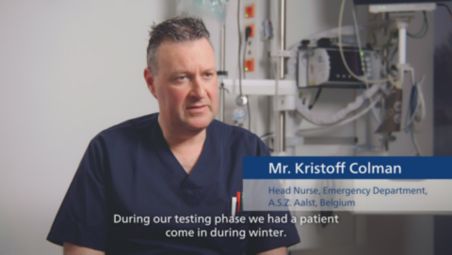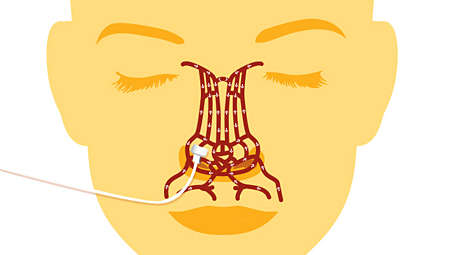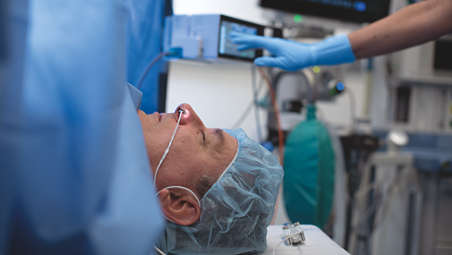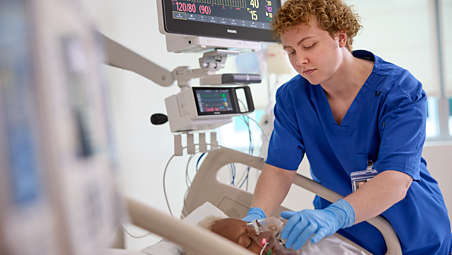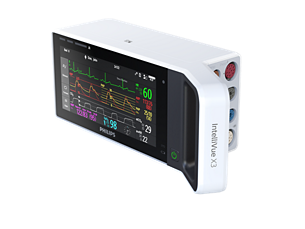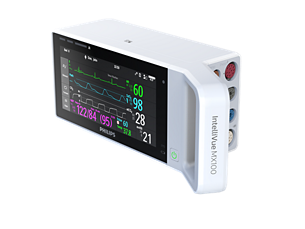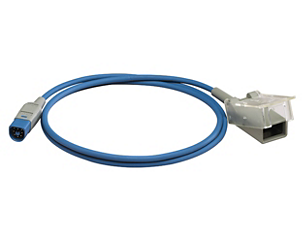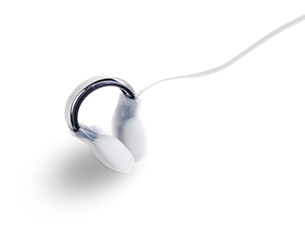Technische specificaties
- Product details
-
Product details Package dimensions - 270 x 230 x 127 mm (10.5 x 9 x 5 in)
-
- Product details
-
Product details Use with non-Philips healthcare equipment - No
Use with Philips healthcare equipment - All Philips monitoring devices with Philips FAST SpO2**
Color - White
Product category - SpO₂
Product type - Sensor
CE certified - Yes
Single-patient use or multi-patient use - Single-patient use
Package weight - 1.36 kg (3 lbs)
Packaging unit - 20 sensors
Not manufactured with natural rubber latex - Yes
Sterile or non-sterile - Non-sterile
Shelf life - Five years
-
- SpO2 Sensor
-
SpO2 Sensor Adapter Cable Compatibility - M1943A, M1943AL
-
- SpO₂ sensor
-
SpO₂ sensor Patient application - Pediatric and adult
Application site - Nasal ala
Cable length - 1 m (3.28 ft)
-
- Product details
-
Product details Package dimensions - 270 x 230 x 127 mm (10.5 x 9 x 5 in)
-
- Product details
-
Product details Use with non-Philips healthcare equipment - No
Use with Philips healthcare equipment - All Philips monitoring devices with Philips FAST SpO2**
-
- Product details
-
Product details Package dimensions - 270 x 230 x 127 mm (10.5 x 9 x 5 in)
-
- Product details
-
Product details Use with non-Philips healthcare equipment - No
Use with Philips healthcare equipment - All Philips monitoring devices with Philips FAST SpO2**
Color - White
Product category - SpO₂
Product type - Sensor
CE certified - Yes
Single-patient use or multi-patient use - Single-patient use
Package weight - 1.36 kg (3 lbs)
Packaging unit - 20 sensors
Not manufactured with natural rubber latex - Yes
Sterile or non-sterile - Non-sterile
Shelf life - Five years
-
- SpO2 Sensor
-
SpO2 Sensor Adapter Cable Compatibility - M1943A, M1943AL
-
- SpO₂ sensor
-
SpO₂ sensor Patient application - Pediatric and adult
Application site - Nasal ala
Cable length - 1 m (3.28 ft)
-
- * Nasal Alar FAST SpO₂ Sensor is not released in all geographies. Please check with your Philips representative for complete portfolio availability.
- **Refer to Instructions for Use for the full list of compatible devices or check with your Philips representative for more information.
- 1. Morey TE, Rice MJ, Vasilopoulos T, Dennis DM, Melker RJ.Feasibility and accuracy of nasal alar pulse oximetry. Br J Anaesth. 2014; 112(6):1109-14. doi: 10.1093/bja/aeu095.
- 2. Schallom M, Prentice D, Sona C, Arroyo C, Mazuski J. Comparison of nasal and forehead oximetry accuracy and pressure injury in critically ill patients. Heart & Lung 2018, 47:93-99. https://doi.org/10.1016/j.hrtlng.2017.12.002
- 3. Schallom M, Prentice D, Sona C, Mazuski J. Comparison of Nasal and Forehead Oximetry Accuracy and Pressure Injury in Critically Ill Patients. Critical Care Medicine. 2016;44:12(Suppl.).
